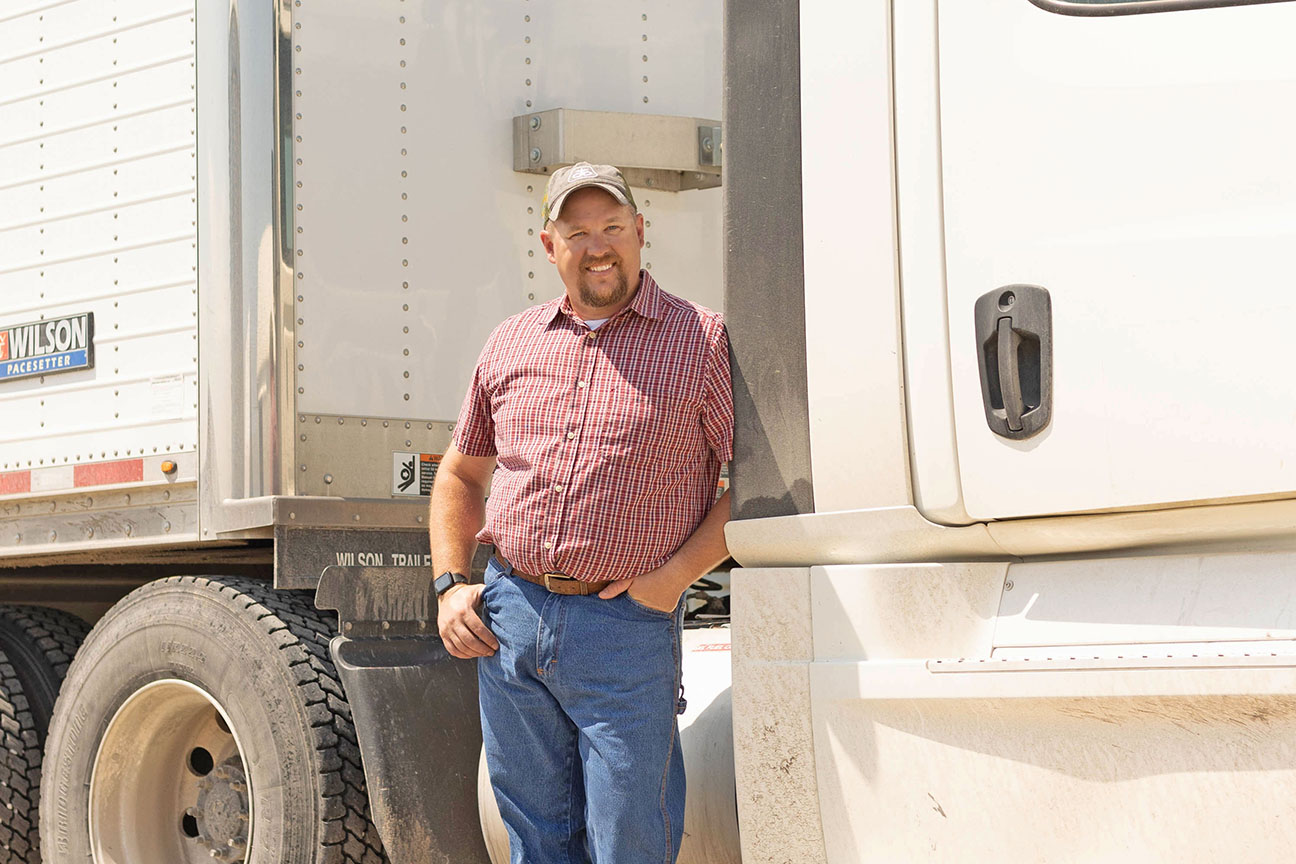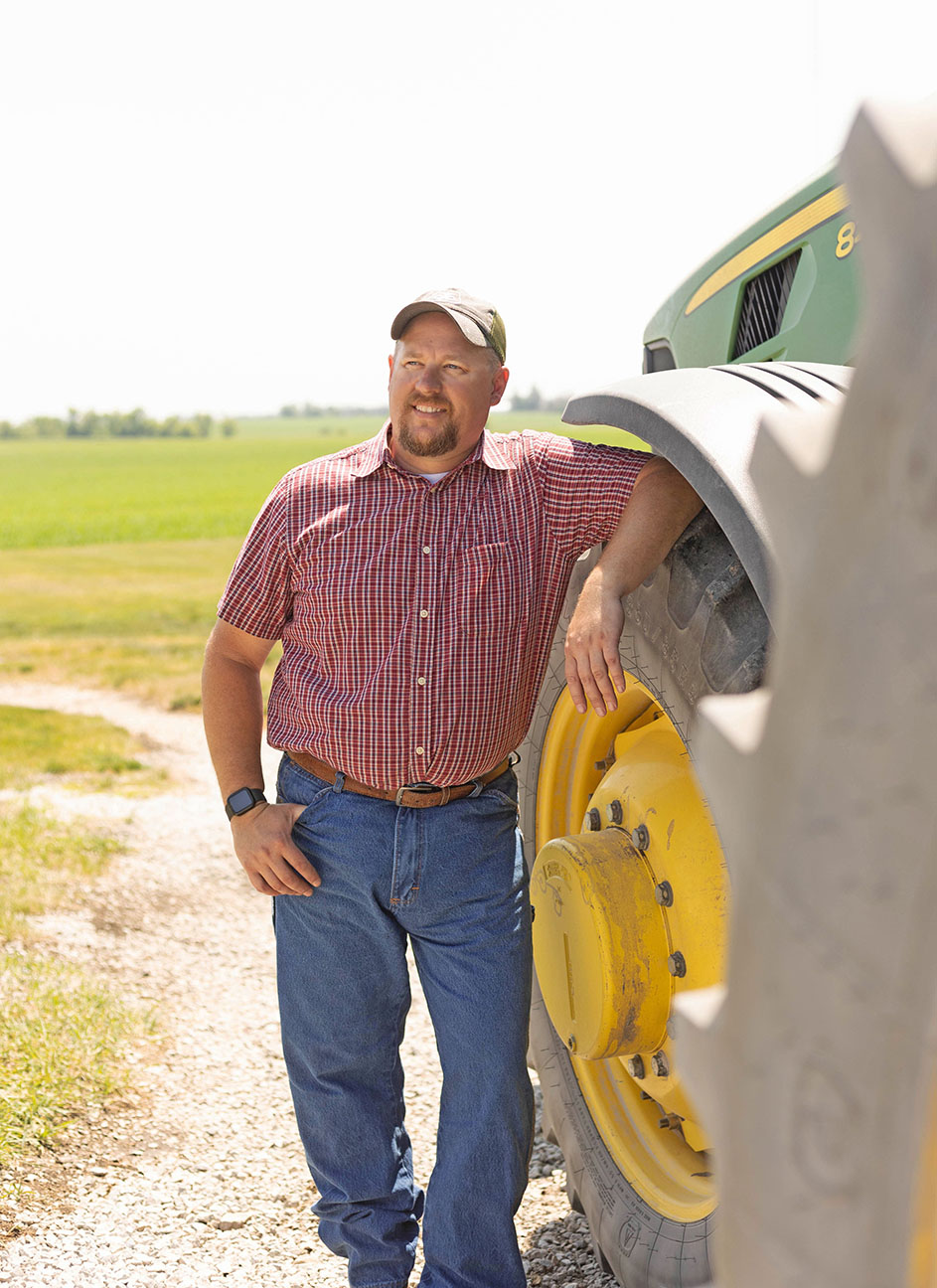
(Photo: Iowa Soybean Association / Joclyn Bushman)
Member spotlight: Tony Lem, Slater
July 6, 2023 | Bethany Baratta
After years of working on the railroad and moving around, Tony Lem got the opportunity to farm. With assistance from the Iowa Soybean Association (ISA), he feels like he’s on the right track.
Lem found an interest in farming by working on a neighbor’s farm. He didn’t grow up on a farm; his mom was a teacher and his dad was a publisher.
He took ag classes at nearby North Polk High School to supplement his on-farm learning experiences.
“I tried my hand at livestock — cattle, hogs and horses. I've always loved the farm,” Lem says.
Mechanically inclined, Lem started working for the Boone & Scenic Valley Railroad as a mechanic while still in high school. He went on to Des Moines Area Community College for diesel technology, and then earned a degree in ag systems technology from Iowa State University (ISU). Walking through a career fair at ISU, Lem was looking for the next step in his career.
And that’s when a Union Pacific recruiter saw Lem walking around in his overalls — literally dressed for a job on the railroad.
“So, the railroad literally dragged me back,” Lem says.
Thus began his career with the railroad. He oversaw teams of mechanics whose job was to keep the railway line functioning. He spent nearly five years in locomotive shop management and another four years in train management.
His wife, Ashlea, obtained her Doctorate of Nursing Practice degree while they were living in Omaha, and the two decided that the railroad career wouldn’t be ideal for raising a family.
Back to the farm
Tony, Ashlea and their daughters, Elizabeth, Avery and Molly, now reside on their farm near Slater. Lem farms with his in-laws, Kurt and Lynda Lehman, raising soybeans and corn. They’ve leaned on the ISA team for research and information to grow better crops.
Working with ISA Agronomist Scott Nelson, Lem has compared tillage methods in his fields. He’s put fertilizers head-to-head, and has researched protein levels and cover crops.
Lem has used the results from those on-farm trials to grow a better crop.
“The results of the tillage and row spacing trial were pretty much what we expected,” Lem says.
In the trial, strip tillage proved that it was going to work on their farm.
“Row spacing didn’t make a bit of difference, and it reinforced that strip tillage was going to work. We can keep the spacing and still raise a good crop,” Lem says.
They’ve added a second planter this year to plant no-till soybeans in 15-inch rows.
“We like the idea of reducing trips with a machine on the ground,” he says. “We also hope to see better weed control and a reduction in erosion potential from the narrow rows and no-till.”
Working with ISA, he’s come to also understand the benefits that reduced tillage can do for his soils.
“Our goal is to improve our cost of production per bushel,” Lem says. “By reducing tillage, we can reduce our input costs and also improve soil quality.”
Lem seeks out opportunities for trials with ISA, understanding he can benefit from both on-farm trials and aggregated data analyzed from trials on other farmers’ fields.
“We’re always trying to learn, and that’s a great way to take in a bunch of data. A lot of these are randomized trials you can get a lot of good pertinent data out of them,” he says. “Maybe the data is not pertinent to your area, but it gets you good idea on something that will work or not. In my eyes that alone is worth the checkoff.”
The opportunities to engage with ISA research are plentiful and timely. One example is the opportunity to test products to destroy volunteer corn in fields hit by the 2020 derecho. The hurricane-like winds decimated Lem’s crops in four fields and damaged nine bins. They are rebuilding the site, replacing the damaged bins with three larger bins to make the operation easier to manage.
The family continues to explore trial opportunities that will bring value to the farm, including a planned fungicide trial this year.
Conservation efforts
Located in the Fourmile Creek Watershed, they’ve implemented several conservation practices over the past two decades to protect water quality and preserve the soil.
“It's the right thing to do,” Lem says. “We must do what we can to take care of it.”
ISA aided Tony in understanding how a saturated buffer and bioreactor could work on the farm. Considered new technology at the time, the trials helped update the specifications to expand utilization of the technologies on Iowa farms.
It’s all a part of continual growth and learning, Lem says.
“If we’re capturing the nutrients, that’s less I have put to down as a fertilizer and less going into the water. Anything I can do to find efficiencies and improve plant and soil health — it’s all tied together.”
Back